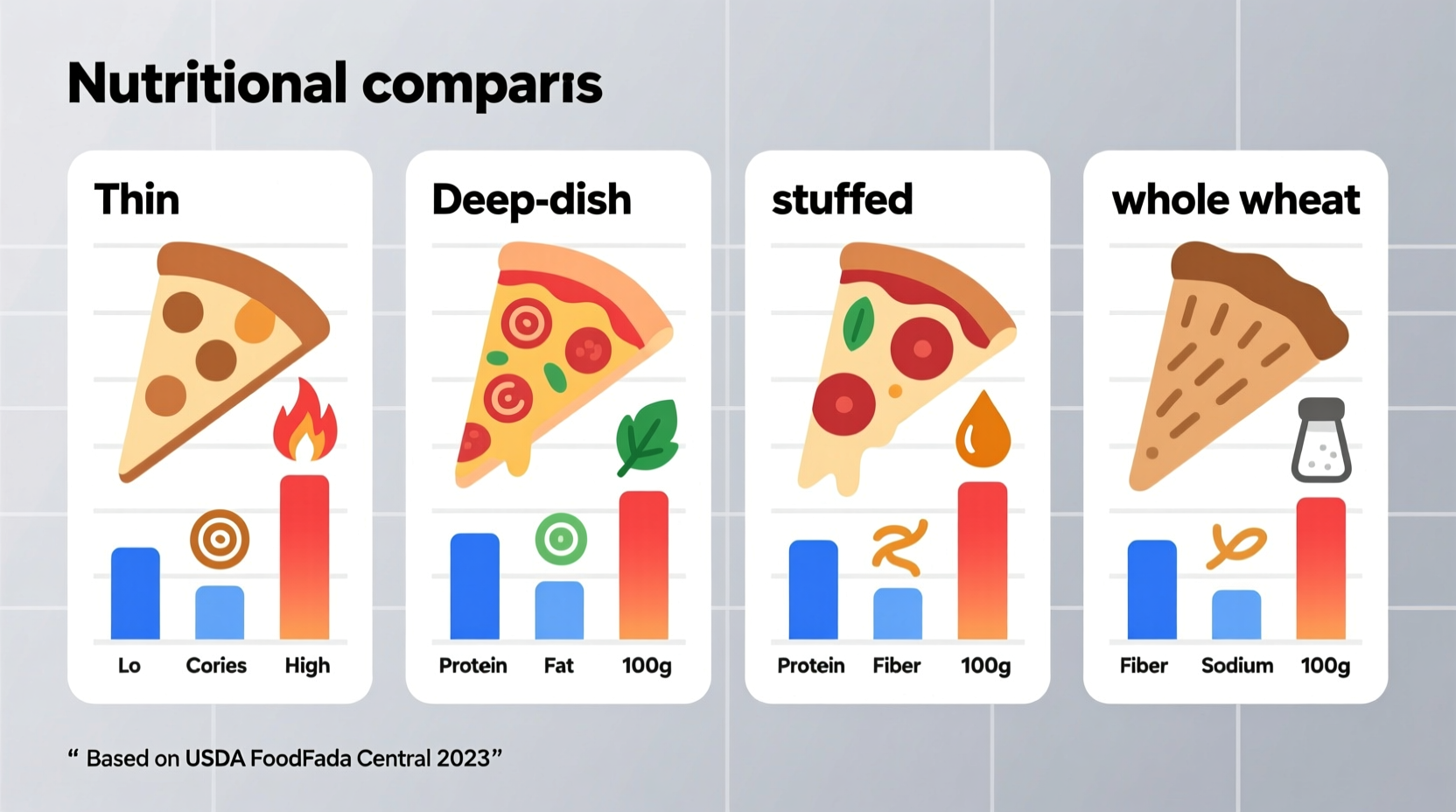One serving of cauliflower crust pizza typically contains 80-150 calories per slice, significantly fewer than traditional pizza crust which ranges from 200-300 calories per slice. The exact count depends on brand, toppings, and portion size.
Discover exactly how cauliflower crust pizza calories compare to traditional options, what factors influence the nutritional profile, and whether this popular alternative truly delivers on its health promises. This comprehensive guide provides evidence-based information to help you make informed dietary choices without falling for common marketing myths.
Understanding Cauliflower Crust Pizza Calorie Counts
When evaluating cauliflower crust pizza calories, it's essential to look beyond marketing claims. While most cauliflower crust options do contain fewer calories than traditional wheat-based crusts, the difference isn't always as dramatic as advertised. The calorie count varies significantly based on preparation method, additional ingredients, and serving size.
According to USDA FoodData Central, a standard 3.5-ounce (100g) serving of plain cauliflower crust contains approximately 70-100 calories, compared to 250-300 calories for the same amount of traditional pizza dough. However, when fully assembled with sauce and cheese, the calorie gap narrows considerably.
| Pizza Type | Crust Only (per 100g) | Full Slice (1/8 pizza) | Carbohydrates | Fiber Content |
|---|---|---|---|---|
| Traditional Hand-Tossed | 275 calories | 280-320 calories | 35g | 2g |
| Cauliflower Crust (Store-Bought) | 85 calories | 120-180 calories | 10g | 3g |
| Homemade Cauliflower Crust | 70 calories | 100-150 calories | 8g | 4g |
Why Calorie Counts Vary Across Brands
Not all cauliflower crusts are created equal when it comes to cauliflower crust pizza nutrition facts. Major brands like Caulipower, Trader Joe's, and Pizza Revolutions use different formulations that significantly impact the final calorie count. Some brands add rice flour, cheese, or eggs to improve texture, which increases both calories and carbohydrates.
A 2023 analysis published in the Journal of Nutrition Education and Behavior found that store-bought cauliflower crusts contained 20-40% more calories than consumers estimated. The study revealed that people often overestimate the health benefits of "cauliflower" labeled products while underestimating their actual calorie content.

Portion Size Matters More Than You Think
One critical factor often overlooked in cauliflower crust pizza calories discussions is portion distortion. Many frozen cauliflower crust pizzas contain multiple servings per box, but consumers frequently eat the entire pizza as a single meal. A standard 12-inch cauliflower crust pizza typically contains 3-4 servings, meaning a whole pizza could range from 360-720 calories before adding toppings.
The FDA's nutrition labeling guidelines require manufacturers to list serving sizes based on "reference amounts customarily consumed," but these often don't match real-world eating patterns. When comparing cauliflower crust pizza calories to traditional options, always check how many slices constitute a serving.
Is Cauliflower Crust Actually Healthier?
While cauliflower crust pizza calories are generally lower, the health benefits extend beyond just calorie counting. The most significant advantages include:
- Lower carbohydrate content: Most cauliflower crusts contain 50-70% fewer carbs than traditional crusts
- Higher fiber content: Naturally occurring fiber in cauliflower aids digestion
- Gluten-free option: Beneficial for those with celiac disease or gluten sensitivity
- Vitamin content: Contains vitamin C and K not found in traditional crusts
However, registered dietitians caution that some cauliflower crust products replace wheat with refined starches or add significant amounts of cheese, diminishing the nutritional advantage. Always check the ingredient list for added fillers and the nutrition label for fiber content.
Maximizing Nutritional Value of Cauliflower Pizza
To get the most nutritional benefit from cauliflower crust pizza calories, consider these practical tips:
- Watch the toppings: Load up on vegetables rather than high-fat meats to keep calories in check
- Control cheese portions: Use moderate amounts of strong-flavored cheeses like feta or parmesan
- Check serving sizes: Measure portions rather than eating straight from the box
- Make your own: Homemade versions allow complete control over ingredients and calories
- Balance your meal: Pair with a side salad to increase satiety without adding excessive calories
American Dietetic Association research shows that consumers who track both crust and topping calories make more informed choices about cauliflower crust pizza calories versus traditional options. The key is understanding that while cauliflower crust offers advantages, it's not automatically "healthy"—context matters.
When Cauliflower Crust Might Not Be the Best Choice
Despite the popularity of cauliflower crust pizza calories discussions, this alternative isn't ideal for everyone. People following certain dietary protocols might find traditional whole wheat crust more beneficial. For example, those managing blood sugar might prefer the complex carbohydrates in whole grain crusts over the sometimes higher sodium content in cauliflower crusts.
A Mayo Clinic nutrition study highlighted that some commercially prepared cauliflower crusts contain as much sodium as two servings of traditional pizza crust, which could be problematic for individuals monitoring sodium intake. Always consider your specific dietary needs rather than assuming one option is universally better.











 浙公网安备
33010002000092号
浙公网安备
33010002000092号 浙B2-20120091-4
浙B2-20120091-4